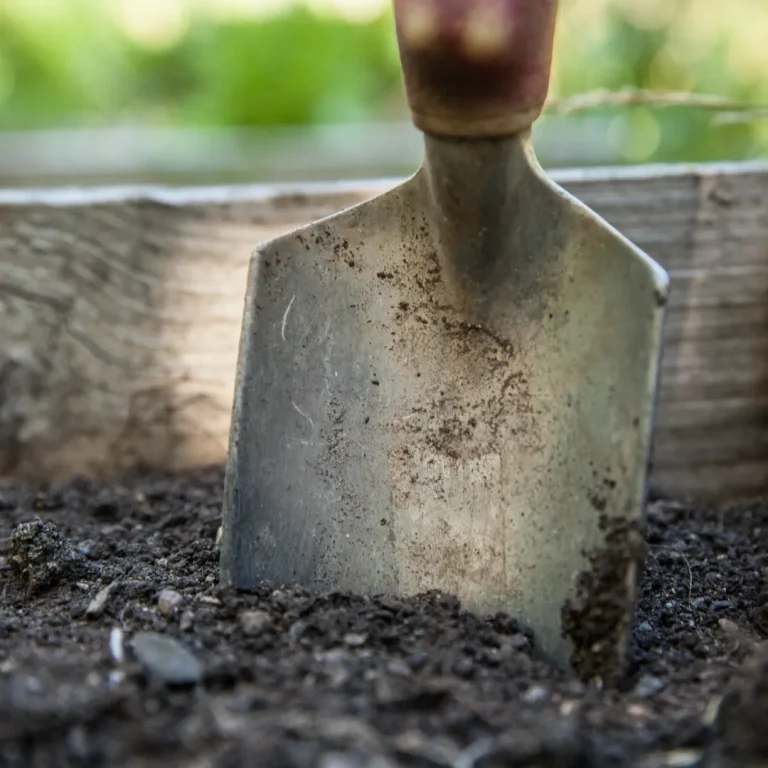Improving the soil quality in your vegetable garden is essential for promoting healthy plant growth, increasing yields, and ensuring your garden thrives. Here’s a comprehensive guide to enhancing soil quality, tailored for both amateur and professional gardeners:
1. Test Your Soil
- Why? Understanding your soil’s current condition (pH, nutrient levels, texture) is crucial. It tells you what your soil lacks and how to address it.
- How? Use a soil test kit available at our garden centre or send a sample to a testing service.
2. Add Organic Matter
Why? Organic matter improves soil structure, nutrient content, water retention, and microbial activity.
How? Incorporate compost, aged manure, leaf mold, or green manures (cover crops). Do this at least once a year, preferably in the fall or early spring.
Green manures are an excellent way to improve soil fertility and structure. They are plants grown specifically to be incorporated back into the soil, where they decompose and enrich the soil with organic matter and nutrients. Here are some common examples of green manure plants:
Legumes
Clover (Trifolium spp.): Fixes nitrogen in the soil, making it available for future crops.
Field Beans (Vicia faba): Good for heavy soils, adds nitrogen, and breaks up the soil with its deep roots.
Vetch (Vicia spp.): A nitrogen-fixer that also provides substantial biomass.
Alfalfa (Medicago sativa): Deep roots help improve soil structure and it’s also a nitrogen-fixer.
Peas (Pisum sativum): Adds nitrogen and improves soil structure.
Non-Legumes
Rye (Secale cereale): Excellent for adding organic matter and preventing erosion.
Mustard (Brassica spp.): Acts as a biofumigant, with some species releasing compounds that can suppress soil-borne pests and diseases.
Buckwheat (Fagopyrum esculentum): Quick-growing, good for smothering weeds, and adds organic matter.
Oats (Avena sativa): Adds biomass and improves soil structure.
Phacelia (Phacelia tanacetifolia): Attracts beneficial insects and adds organic matter.
Benefits of Green Manures
Soil Fertility: They add nutrients, especially nitrogen if they’re legumes, through their decomposition.
Soil Structure: Their roots help to break up compacted soil, improving aeration and drainage.
Weed Suppression: Fast-growing green manures can outcompete weeds, reducing the need for weeding.
Erosion Control: They can help to hold the soil in place between growing seasons.
Pest and Disease Management: Some green manures can suppress soil pathogens and pests.
How to Use Green Manures
Choose a green manure suitable for your climate, soil type, and the time of year.
Sow the seeds according to the specific requirements of the plant.
Grow until they begin to flower but before they set seed.
Cut down and either dig into the soil or leave on the surface as a mulch, depending on the specific plant and your gardening strategy.
Incorporating green manures into your crop rotation plan can significantly benefit soil health and fertility, contributing to more productive vegetable and flower gardens.
3. Use Mulch
- Why? Mulch conserves moisture, suppresses weeds, and adds organic matter as it decomposes.
- How? Apply a 2-3 inch layer of organic mulch (straw, wood chips, bark, or grass clippings) around your plants.
4. Rotate Crops
- Why? Crop rotation prevents soil depletion and reduces pest and disease build-up.
- How? Change the location of plant families each year. For example, don’t plant tomatoes (or related plants like peppers and eggplants) in the same spot more than once every three years.
5. Practice No-Till Gardening
- Why? Tilling can disrupt soil structure, harm beneficial microbes, and lead to erosion.
- How? Minimize soil disturbance. Use mulches to control weeds and leave roots in place after harvesting to decay and improve soil structure.
6. Add Nutrients Wisely
- Why? Balanced nutrition is key to healthy plants. Over-fertilizing can harm plants and the environment.
- How? Based on your soil test, amend your soil with needed nutrients. Use organic fertilizers like bone meal, fish emulsion, or rock phosphate to provide a slow-release nutrient source.
7. Enhance Microbial Life
- Why? Microorganisms break down organic matter into nutrients plants can use and improve soil structure.
- How? Add biofertilizers, compost tea, or worm castings to introduce beneficial microbes. Avoid using pesticides and chemical fertilizers that can harm soil life.
8. Ensure Proper Drainage
- Why? Waterlogged soil can suffocate roots, leading to plant stress and disease.
- How? If drainage is poor, consider raised beds or amend the soil with coarse sand and organic matter to improve porosity.
9. Cover Crops
- Why? Cover crops (e.g., clover, rye, vetch) prevent erosion, improve soil structure, and fix nitrogen.
- How? Plant cover crops in the off-season. Cut them down before they seed and either leave them as a mulch or dig them into the soil.
10. Monitor and Adjust
- Why? Soil conditions change over time due to weather, cropping, and amendments.
- How? Regularly check your soil’s condition and adjust your management practices accordingly. Annual soil testing can guide your efforts.
By following these steps and being attentive to your garden’s needs, you can significantly improve the soil quality in your vegetable garden, leading to a more productive and vibrant garden. Remember, soil health is a long-term investment; improvements may take time to manifest, but the benefits to your garden’s ecosystem and productivity are well worth the effort.






